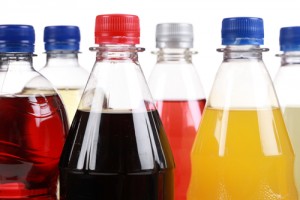 As product liability multidistrict litigation becomes more prevalent, it is important for manufacturers to understand how the bellwether trial process works and how to use it to their advantage. The ongoing bellwether trials in the GM faulty ignition switch MDL have generated a significant amount of media attention and serve to highlight the factors that manufacturers should consider when navigating the bellwether process.
As product liability multidistrict litigation becomes more prevalent, it is important for manufacturers to understand how the bellwether trial process works and how to use it to their advantage. The ongoing bellwether trials in the GM faulty ignition switch MDL have generated a significant amount of media attention and serve to highlight the factors that manufacturers should consider when navigating the bellwether process.
By way of brief background, two years ago GM admitted that it failed to disclose for a decade its faulty ignition switch installed in millions of small cars. Following the admission, GM settled a criminal investigation by the Justice Department by agreeing to pay $900 million and has agreed to fines by the Transportation Department. Although GM has already settled more than 1,000 death and injury claims and settled a class-action suit by shareholders, the MDL representing about 235 wrongful-death and injury cases remains pending in state and federal court in the United States District Court for the Southern District of New York. Three of the six planned bellwether trials have been tried or settled, providing insight into how the manufacturer is using the bellwether process to its advantage.
The use of bellwethers has developed mainly in the MDL setting, where it can “flourish.”[1] Merriam Webster defines “bellwether” as “someone or something that leads others or shows what will happen in the future.” The term comes from the Middle English “bellewether” and refers to placing a bell around the neck of a castrated ram (called a wether) who would lead the flock of sheep. The idea being that the movements of the flock could be heard via the bell before the flock was seen. Initially, bellwethers were used in an attempt to bind related claimants. In other words, one related plaintiff could be bound by the decision in separate, but related, case. This is no longer the case and the outcome in one bellwether has no binding effect on another case.
What is the purpose of bellwether trials if they aren’t binding all claimants like a class action? The primary advantage is to enhance and accelerate the MDL process. Significantly, bellwether trials provide incredibly valuable information about the strengths and weaknesses of representative cases that can assist and hasten the global settlement process. Naturally, the maturation of bellwether trials from discovery to verdict provides a more predictable expected value to each individual claim. This knowledge serves as a catalyst toward ultimate resolution.
Another benefit is to allow attorneys to test the waters by putting a number of cases before juries and seeing how juries react to various cases, theories, and defenses. For example, the defense can use the bellwether trial as an opportunity to try an argument that has the potential to knock out a particular element of the litigation, such as causation or damages. The ability to test different strategies and defenses in front of a real jury supplies more useful and realistic knowledge about the strength of the case than do the alternatives like mock juries. Finally, as noted by the GM MDL court, bellwether trials also provide the parties the chance to develop a litigation framework, or trial package, that can be used by local counsel in cases remanded back to the original jurisdictions, at lower cost.
However, defendants must be careful in their choices if the bellwether process is to provide maximum benefit. The Manual for Complex Litigation notes that if bellwether trials “are to produce reliable information about other mass tort cases, the specific plaintiffs and their claims should be representative of the range of cases.” MANUAL FOR COMPLEX LITIGATION (Fourth) § 22.315 (Federal Judicial Center 2004); Rothstein, et al., MANAGING MULTIDISTRICT LITIGATION IN PRODUCTS LIABILITY CASES: A POCKET GUIDE FOR TRANSFEREE JUDGES at 44 (Federal Judicial Center 2011). Obviously, the more typical the bellwether case is of the universe of claims in the MDL, the more valuable its outcomes.
Bellwethers can be chosen at random from a pool of cases or the parties can have a say in choosing the cases. When the parties choose cases, you often see a mix of some cases stronger for the plaintiff and some for the defendant. Looking at the outcomes individually and collectively can then help to inform the decision of how the large pool of cases should be handled and resolved. Defense attorneys must resist choosing only their best cases because the purpose of the bellwether is to represent a prototype for the rest of the litigation. Atypically favorable cases for one side or the other fail to meet this purpose. To identify the appropriate bellwether cases, it is useful to first catalog the entire universe of cases and then choose a few variables within the cases to consider (e.g., type of injury or date of injury). Out of this catalog, the parties or judge can choose the pool of cases that will proceed to case specific discovery.
The GM MDL followed these guidelines. The court began by identifying eighteen personal injury and wrongful death cases that would be identified for fact specific discovery. The Court referred to these cases as “Initial Discovery Pool.” The court then stated that a subset of those cases would be selected for additional pretrial discovery and proceedings in preparation for trial. In order to even be included in the Initial Discovery Pool, a claim had to satisfy certain criteria. For example, the claim had to involve an accident occurring after the “new GM” acquired substantially all of the “Old GM’s” assets on July 10, 2009 and the claimant could not have accepted an offer through the GM Ignition Compensation Claims Resolution Facility which was set up to settle claims of individuals having accident involving the ignition switch defect. Ultimately, each side selected half of the bellwether trials from this pool.
There are a total of six GM ignition bellwethers. The first trial was a success for GM after the plaintiff’s case imploded and was dismissed in January 2016 following accusations that the plaintiff had given misleading testimony about his health and financial condition. Specifically, the plaintiff claimed to suffer neck and back injuries after an accident in which he alleged the defective switch disabled his air bag. GM found evidence undercutting these claims, including the extent of plaintiff’s injuries and the details of the plaintiff’s house eviction after the accident. GM found evidence that the family was evicted because they doctored a federal government check stub to provide proof of funds necessary for the move. Although this case did not proceed to trial, it provides the important lesson for defendants and manufacturers to search for evidence that could undermine plaintiff’s claims of injury or damages.
GM emerged victorious in the second bellwether case as well. The trial was selected by GM as a favorable case, and as predicted, the case was tried to a jury verdict in March. Significantly, the jury found that while the plaintiff’s GM vehicle was unreasonably dangerous as a result of the defect, and that GM failed to use reasonable care to warn consumers of the danger, the defect did not cause the accident at issue, and therefore, there were no damages. Notably, the judge dismissed the plaintiff’s fraud claim at the end of witness testimony and rejected a demand for punitive damages.
The third GM bellwether was thought to be a much stronger case for plaintiff in that it involved a fatal accident. That case recently settled. It is likely that GM decided to settle the case to avoid trying a case involving a fatal accident in front of a jury. The fourth bellwether is scheduled for trial on July 18, 2016 and the fifth and sixth follow thereafter.
The GM cases highlight the benefit of the bellwether process. Given the criminal and other government investigations into GM’s faulty ignition, the issue has received massive media attention. Where GM has been taken to task, especially given the criminal and other government investigations, it would appear that the defectiveness of the ignition switch is a forgone conclusion and GM was squarely at fault. However, the defectiveness of the ignition switch, as it relates to causation of accidents, remained an issue in the second bellwether. It showed that a jury was able to tease out the differences between a defective product and causation of plaintiff’s damages. Further, both the first and second bellwether cases tested damages. Even where the case is inherently favorable to GM, that remains a powerful affirmation heading into the next bellwether trials and will likely play a role in the global settlement process.
The takeaway lesson from all of this is that the bellwether process is one which plays a critical role in complex litigation and which must be carefully used and managed in order to get the best results possible.
[1] Eldon E. Fallon, Jeremy T. Grabill, & Robert Pitard Wynne, Bellwether Trials in Multidistrict Litigation, 82 Tulane L. Rev. 2323 (2008).
 On April 19, 2016, the Third Circuit Court of Appeals issued its opinion on the issue of federal preemption in Sikkelee v. Precision Airmotive Corp. The sixty-one page opinion effectively narrowed the scope of federal preemption and held that aviation product liability claims are to be controlled by state tort law standards of care as opposed to federal standards of care. This opinion could expose aviation product manufacturers to potential liability, as well as the unpredictability of non-uniform standards across the states.
On April 19, 2016, the Third Circuit Court of Appeals issued its opinion on the issue of federal preemption in Sikkelee v. Precision Airmotive Corp. The sixty-one page opinion effectively narrowed the scope of federal preemption and held that aviation product liability claims are to be controlled by state tort law standards of care as opposed to federal standards of care. This opinion could expose aviation product manufacturers to potential liability, as well as the unpredictability of non-uniform standards across the states.
 As product liability multidistrict litigation becomes more prevalent, it is important for manufacturers to understand how the bellwether trial process works and how to use it to their advantage. The ongoing bellwether trials in the GM faulty ignition switch MDL have generated a significant amount of media attention and serve to highlight the factors that manufacturers should consider when navigating the bellwether process.
As product liability multidistrict litigation becomes more prevalent, it is important for manufacturers to understand how the bellwether trial process works and how to use it to their advantage. The ongoing bellwether trials in the GM faulty ignition switch MDL have generated a significant amount of media attention and serve to highlight the factors that manufacturers should consider when navigating the bellwether process. On March 18, 2016, Pom Wonderful LLC made closing arguments in its trial against Coca-Cola for the alleged misleading marketing of a pomegranate-blueberry juice which contained only trace amounts of either pomegranate or blueberry juice. Pom’s attorneys argued that Coca-Cola was attempting to deceive consumers by creating a product whose label prominently depicted pictures of blueberries and pomegranates, yet didn’t adequately inform consumers that the Coca-Cola owned Minute Maid juice contained only .3 percent pomegranate juice and .2 percent blueberry juice. According to Pom, this allowed Coca-Cola to undercut Pom’s pricing by 75 percent and effectively take customers away from Pom. Pom argued that as a result, Coca-Cola’s misleading advertising cost the company almost $10 million a year from 2007 to 2014 (totaling more than $77 million).
On March 18, 2016, Pom Wonderful LLC made closing arguments in its trial against Coca-Cola for the alleged misleading marketing of a pomegranate-blueberry juice which contained only trace amounts of either pomegranate or blueberry juice. Pom’s attorneys argued that Coca-Cola was attempting to deceive consumers by creating a product whose label prominently depicted pictures of blueberries and pomegranates, yet didn’t adequately inform consumers that the Coca-Cola owned Minute Maid juice contained only .3 percent pomegranate juice and .2 percent blueberry juice. According to Pom, this allowed Coca-Cola to undercut Pom’s pricing by 75 percent and effectively take customers away from Pom. Pom argued that as a result, Coca-Cola’s misleading advertising cost the company almost $10 million a year from 2007 to 2014 (totaling more than $77 million). Hundreds of billions of business e-mails are sent per day. That number may not come as a shock to many, but once a company is involved in litigation, e-discovery can be quite burdensome. Even the mention of the phrase “e-discovery” can keep in-house counsel up at night. While e-discovery continues to be an unavoidable aspect of litigation, a recent decision interpreting amended Federal Rule 26 by the United States District Court for the Southern District of Florida offers a reasonable basis to withhold the disclosure of highly confidential, yet irrelevant, competitive information.
Hundreds of billions of business e-mails are sent per day. That number may not come as a shock to many, but once a company is involved in litigation, e-discovery can be quite burdensome. Even the mention of the phrase “e-discovery” can keep in-house counsel up at night. While e-discovery continues to be an unavoidable aspect of litigation, a recent decision interpreting amended Federal Rule 26 by the United States District Court for the Southern District of Florida offers a reasonable basis to withhold the disclosure of highly confidential, yet irrelevant, competitive information. This month, United States District Judge Sam Sparks of the Western District of Texas dismissed a Second Amended Consolidated Complaint in an MDL styled In re: Whole Foods Market, Inc., Greek Yogurt Marketing and Sales Practices Litigation. At issue in the MDL was the label for Whole Foods’ “365 Everyday Value Plain Greek Yogurt,” which listed the yogurt as having 2 grams of sugar per one cup serving. According to the plaintiffs, this statement was false because the yogurt contained 11.4 grams of sugar per one cup serving. To support their claim, the plaintiffs relied solely on six tests conducted by Consumer Reports. The plaintiffs did no independent testing of their own.
This month, United States District Judge Sam Sparks of the Western District of Texas dismissed a Second Amended Consolidated Complaint in an MDL styled In re: Whole Foods Market, Inc., Greek Yogurt Marketing and Sales Practices Litigation. At issue in the MDL was the label for Whole Foods’ “365 Everyday Value Plain Greek Yogurt,” which listed the yogurt as having 2 grams of sugar per one cup serving. According to the plaintiffs, this statement was false because the yogurt contained 11.4 grams of sugar per one cup serving. To support their claim, the plaintiffs relied solely on six tests conducted by Consumer Reports. The plaintiffs did no independent testing of their own. One of the tasks manufacturing companies frequently face is having their products inspected and tested as part of the pre-litigation or litigation process. While this may sound routine, it is important to have a detailed roadmap for conducting a successful inspection.
One of the tasks manufacturing companies frequently face is having their products inspected and tested as part of the pre-litigation or litigation process. While this may sound routine, it is important to have a detailed roadmap for conducting a successful inspection. Last week, in the
Last week, in the 